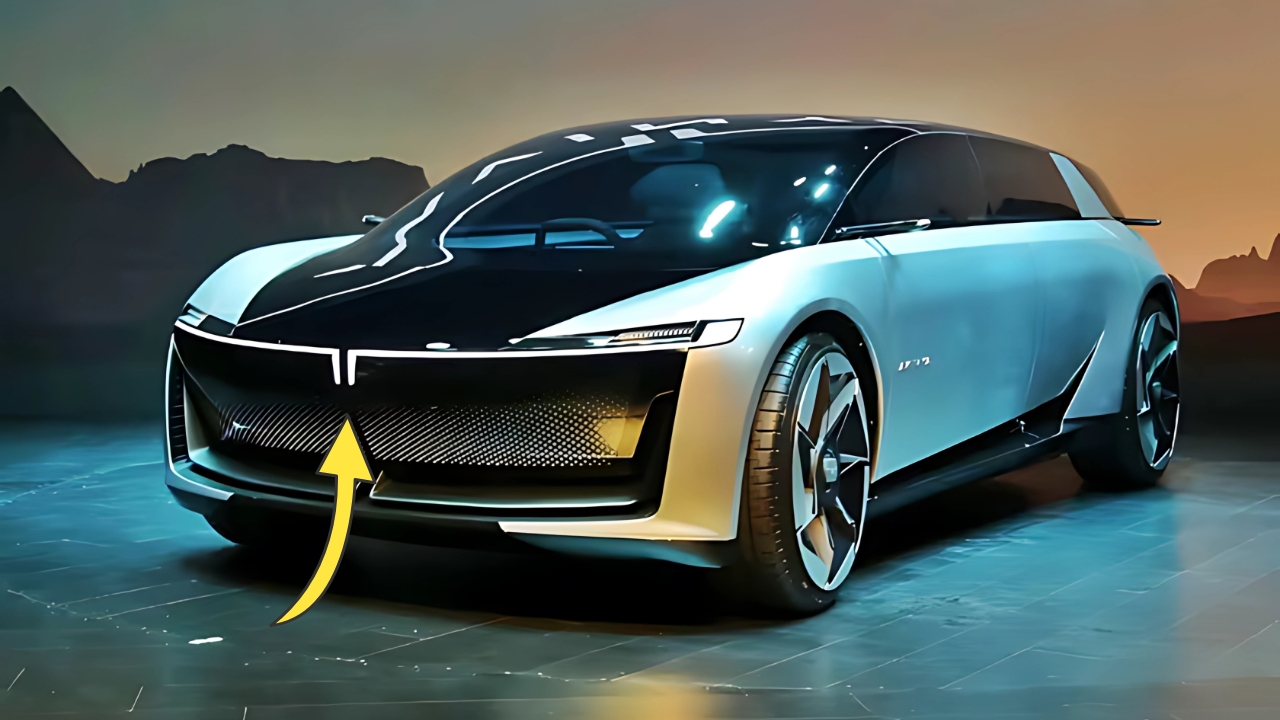Tata Avinya: In the rapidly evolving landscape of electric vehicles, Indian automotive giant Tata Motors has unveiled an ambitious concept that signals its commitment to sustainable transportation.
The Tata Avinya, whose name derives from the Sanskrit word for ‘innovation’, represents not just a new vehicle but a forward-thinking platform that could redefine electric mobility in India and beyond.
This concept car showcases Tata’s vision for the future of transportation, blending cutting-edge technology with thoughtful design centered around human experience.
Design Philosophy: A New Design Language
The Avinya concept introduces a distinctive design language that Tata calls “Pure,” which emphasizes simplicity, robustness, and durability while creating a visually striking silhouette.
Unlike traditional vehicle classifications, the Avinya defies easy categorization – it’s neither sedan nor SUV, but rather a crossover with a spacious, lounge-like interior made possible by the advantages of a purpose-built electric vehicle platform.
The exterior features clean, uninterrupted surfaces with minimal character lines, creating a sleek and aerodynamic profile that contributes to extended range.
The front and rear of the vehicle are dominated by LED light bars that span the width of the body, creating a distinctive lighting signature that enhances brand recognition while serving functional purposes.
Perhaps the most eye-catching design element is the butterfly doors that open outward and upward, creating a wide, pillarless entry that transforms the act of entering the vehicle into an experience.
While such doors are typically reserved for supercars and concept vehicles, Tata has suggested that this feature might make it to production, albeit potentially in a modified form to ensure practicality and safety.
Platform Innovation: Born Electric
The Avinya is built on Tata’s new Generation 3 architecture, specifically designed for electric vehicles from the ground up.
Unlike converted platforms that adapt existing combustion-engine vehicle designs to accommodate electric powertrains, this “born electric” approach allows for optimized packaging, weight distribution, and space utilization.
The skateboard-like platform houses the battery pack flat beneath the floor, creating a low center of gravity that enhances stability and handling while maximizing interior space.
This platform is designed with scalability in mind, potentially spawning multiple vehicle types across different segments and price points.
Tata claims the architecture incorporates advanced structural safety features, with crash absorption zones designed specifically for electric vehicle protection.
The platform also utilizes sustainable materials throughout, reflecting Tata’s commitment to reducing environmental impact across the entire lifecycle of the vehicle.
Interior Experience: Human-Centered Design
Stepping inside the Avinya reveals an interior focused on passenger comfort and wellbeing. The cabin embraces a minimalist aesthetic with sustainable materials, including recycled fabrics and responsibly sourced wood accents.
The absence of a traditional instrument cluster in favor of voice commands and selective displays creates an uncluttered environment that emphasizes spaciousness.
The seating arrangement prioritizes comfort with lounge-like chairs that can reconfigure for different scenarios, from productive work commutes to relaxed family journeys.
Ambient lighting integrated throughout the cabin adapts to time of day and driver preferences, creating a personalized atmosphere.
A standout interior feature is what Tata calls the “soundbar” – a central element that houses not only the audio system but also fragrance diffusers and air purification technology, addressing multiple sensory experiences simultaneously.
This focus on sensory comfort extends to acoustic engineering, with the cabin designed to minimize road and wind noise while maintaining a connection to the outside environment when desired.
Technology Integration: Seamless and Intuitive
Rather than overwhelming occupants with screens and buttons, the Avinya takes a more nuanced approach to technology integration.
The concept embraces voice control and gesture recognition as primary interfaces, complemented by a floating display that provides essential information without dominating the visual landscape.
Connectivity features enable seamless integration with home and office environments, allowing journeys to become productive extensions of daily life rather than interruptions.
The vehicle is designed to learn occupant preferences over time, adapting climate, lighting, and entertainment settings to individual tastes without requiring manual adjustment.
Advanced driver assistance systems are incorporated throughout, with Tata suggesting Level 2+ autonomy capabilities at launch with the hardware necessary for more advanced autonomous functions through software updates as regulations and technology evolve.
Powertrain and Performance: Practical Range
While Tata has been relatively reserved about specific powertrain details, the company has indicated that the production version of the Avinya will offer a minimum range of 500 kilometers (approximately 310 miles) on a single charge.
Perhaps more impressively, the vehicle will supposedly support ultra-fast charging that can add 200-250 kilometers (124-155 miles) of range in just 30 minutes.
The dual-motor setup provides all-wheel drive capability, enhancing performance and all-weather confidence.
Tata has focused on optimizing efficiency rather than headline-grabbing acceleration figures, though the instant torque characteristic of electric motors should provide satisfying responsiveness.
Market Positioning and Timeline
Tata has positioned the Avinya as a premium offering that will showcase the company’s highest level of technology and craftsmanship.
The production version is expected to launch by 2025, giving Tata time to refine the concept and develop the necessary manufacturing capabilities.
The Avinya represents a significant step up from Tata’s current electric offerings like the Nexon EV and Tigor EV, which are adapted from combustion-engine platforms.
By establishing a dedicated electric vehicle architecture, Tata is signaling its long-term commitment to electrification beyond simple compliance with regulations.
Broader Significance for Indian Automotive Industry
The Avinya concept demonstrates India’s growing ambitions in the global automotive landscape.
Rather than simply following trends established by manufacturers in other markets, Tata is creating a vision for electric mobility that addresses the specific needs and conditions of the Indian market while maintaining global appeal.
If successfully brought to production with the promised features and capabilities, the Avinya could help establish India as an innovation hub for electric vehicles rather than merely a manufacturing center.
This shift would represent a significant evolution for the Indian automotive industry, potentially creating new export opportunities and elevating the perception of Indian engineering worldwide.
Tata Avinya
The Tata Avinya concept represents a bold statement of intent from one of India’s largest automotive manufacturers.
By developing a purpose-built electric platform with a focus on human-centered design, Tata is positioning itself at the forefront of the electric vehicle transition in its home market while creating a product with potential global appeal.
While the journey from concept to production always involves compromises, the fundamental approach of the Avinya – prioritizing space, comfort, and seamless technology integration – addresses genuine consumer needs rather than simply chasing specification benchmarks.
If Tata can deliver on the promises embodied in this concept, the Avinya could indeed live up to its innovative name and help redefine expectations for electric mobility.

